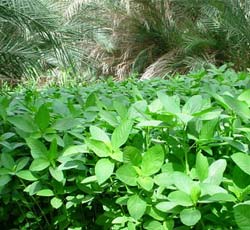Blog entry by Rubye Schroder
Planting seeds is an essential aspect of agriculture, horticulture, and even gardening. The process of seeding is critical as it determines the success of a crop or plant. In the past, seed planting was done manually, which was time-consuming and labor-intensive. However, with the advancements in technology and techniques, seed planting has become more efficient, precise, and sustainable. In this article, we will discuss the latest developments in seed planting and how they can contribute to the future of agriculture.
Precision Seed Drills
Precision seed drills are machines that plant seeds in a precise and accurate manner, which ensures that each seed is planted at the optimal depth and spacing. These drills are equipped with sensors and GPS technology that can detect soil moisture, temperature, and texture. This information is used to adjust the depth and spacing of the seeds, which results in higher germination rates and better crop yields. Precision seed drills have become an essential tool in modern agriculture as they reduce seed wastage, increase efficiency, and reduce labor costs.
Seed Coating
Seed coating is a process that involves adding a thin layer of material to the surface of a seed. The coating can be made of various materials, including polymers, fertilizers, and pesticides. The primary goal of seed coating is to improve seed performance, protection, and germination. Seed coating can prevent seed damage from pests, diseases, and environmental factors such as drought and heat. Seed coating can also improve the nutrient uptake and moisture retention of the seed, which can result in faster and healthier plant growth.
Hydroseeding
Hydroseeding is a process that involves spraying a slurry of seed, water, بذور حشيشة السودان and mulch onto the ground. The slurry is sprayed using a machine that can cover large areas quickly and efficiently. Hydroseeding is commonly used for erosion control, re-vegetation, and landscaping. Hydroseeding is an effective way to plant seeds as the slurry provides a protective layer that helps the seeds germinate and grow. Hydroseeding is also cost-effective compared to traditional seeding methods, as it requires less labor and equipment.
Vertical Farming
Vertical farming is a technique that involves growing crops in vertically stacked layers. The crops are grown in a controlled environment that is optimized for growth using artificial lighting, temperature, and humidity. Vertical farming is an innovative technique that can produce high yields of crops in a small space. Vertical farming can also reduce water usage by up to 90% compared to traditional farming methods. Vertical farming is a sustainable way to plant seeds as it reduces land usage, water usage, and carbon emissions.
Conclusion
 The
advancements in technology and techniques have revolutionized the
way we plant seeds. Precision seed drills, seed coating,
hydroseeding, and vertical farming are just a few examples of the
latest developments in seed planting. These advancements have
made seed planting more efficient, precise, and sustainable. As
we look towards the future of agriculture, we can expect to see
more developments in seed planting that will contribute to the
growth and success of crops and بذور
حشيشة السودان plants.
The
advancements in technology and techniques have revolutionized the
way we plant seeds. Precision seed drills, seed coating,
hydroseeding, and vertical farming are just a few examples of the
latest developments in seed planting. These advancements have
made seed planting more efficient, precise, and sustainable. As
we look towards the future of agriculture, we can expect to see
more developments in seed planting that will contribute to the
growth and success of crops and بذور
حشيشة السودان plants.
